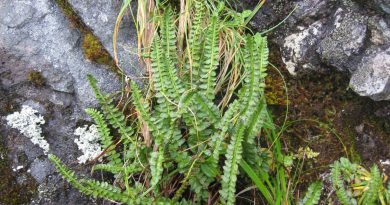Picture from N.W.T. among winners of international astronomy photography competition
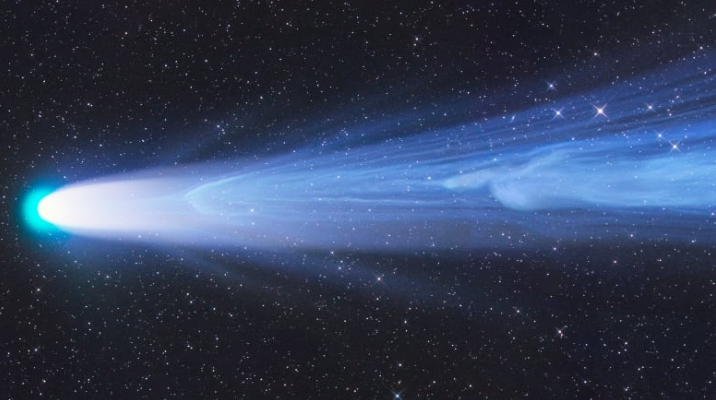
Taking photos of our universe is hard work, but the winners and contestants in the Royal Observatory Greenwich’s Astronomy Photographer of the Year competition make it look easy.
People who take images of the cosmos are called astrophotographers, and it can become an obsession. But they come from all walks of life, with varying degrees of equipment and know-how from all around the globe. But what they all have in common is a love of our night sky and the desire to share it with others.
Taking astronomical photos requires a lot of patience. For deep-sky images — like nebulas, galaxies and star clusters —most astrophotographers use special cameras that attach to their telescopes.
Much like space telescopes, the photographers often use different filters, such as red, green and blue, but sometimes others that only allow particular wavelengths to show up on the sensor. They take many images in each filter, leaving the camera’s shutter open for varying amounts of time, sometimes 10 minutes or more, depending on how dim the object is.
Then, using special astrophotography software, they stack those images together — imagine literally adding photos one on top of the other; this sharpens the image and reduces what photographers call noise. This produces the final colour image that can then be processed using different photographic software.
Here are some of the winners of this year’s Astronomy Photographer of the Year, along with honourable mentions and special considerations.
Disconnection Event
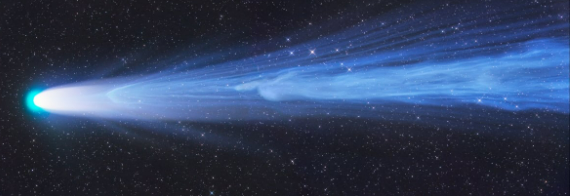
The overall winner of the award was Gerald Rhemann for the above image of Comet Leonard, which was discovered by G.J. Leonard on Jan. 3, 2021. The comet made its closest pass of Earth in December 2021.
Comets are balls of dust and ice that orbit the sun. As comets — often called “dirty snowballs” — near the sun, their tails can elongate and become brighter.
Rhemann’s image shows the comet on Dec. 25, 2021, where a noticeable part of its tail was pinched off and carried away by solar wind.
Unfortunately, Comet Leonard disintegrated in early 2022 and will not be seen again.
The Jovian Family
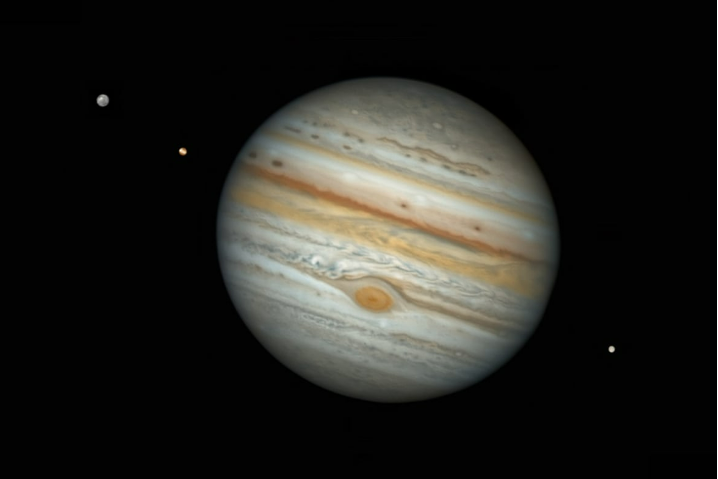
Damian Peach is an accomplished astrophotographer, with most of his images focusing on Jupiter and Saturn. He won runner-up in the Planets, Comets and Asteroids category.
He took an image of our solar system’s biggest planet, Jupiter, together with three of its largest moons — Ganymede, Io and Europa — from Chile in August 2021.
Also visible is Jupiter’s Great Red Spot, a storm that has been brewing across the planet for at least 400 years.
Cosmic Rose
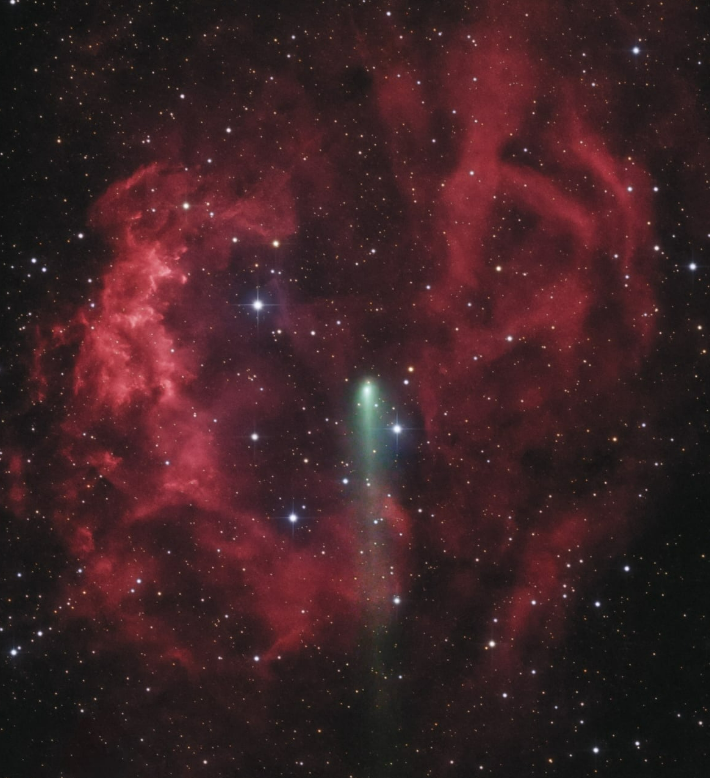
Lionel Majzik took this image of Comet 4P/Faye in front of a nebula known as Lower’s Nebula or Sh2-261 in the constellation Orion. This image was highly commended in the Planets, Comets and Asteroids category.
He used a remote telescope located in Mayhill, N.M., and was able to capture this rose-like nebula with the comet creating what looks like a green stem.
Misty Green River

Canadian Fred Bailey was the runner up in the aurora category. He captured the magnificence of the northern lights over Cameron River near Yellowknife on Sept. 1, 2021.
He took this shot using only a camera with an 18-mm lens and a 15-second exposure.
Winged Aurora
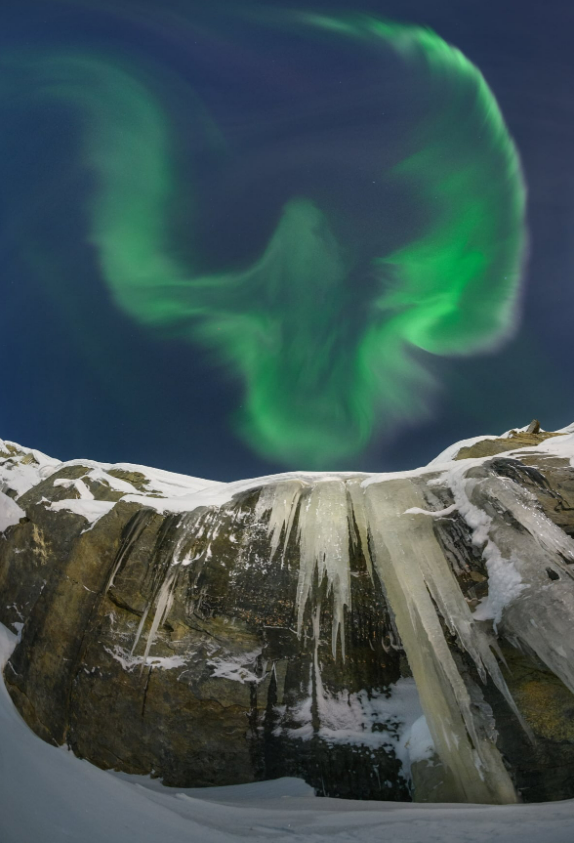
A highly commended image in the Aurora category is this one by Alexander Stepanenko. He photographed an almost angel-like aurora against a clear sky in Murmansk, Russia, on Jan. 15, 2022. This was just a 1.6-second exposure.
“Aurora pictures are always beautiful to look at, but never have such images stopped me in my tracks like this one,” said judge Melissa Brobby.
“This wonderfully fortunate capture is simplistic in its beauty, but the sheer majesty of the winged aurora looming over the mountain is breathtaking. I haven’t stopped looking at this picture in awe.”
Majestic Sombrero Galaxy
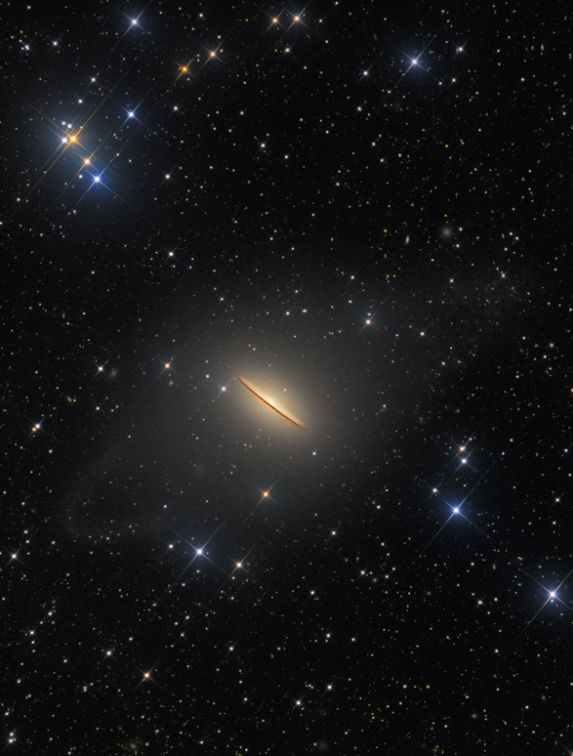
The Sombrero Galaxy is a favourite of many astrophotographers. This image was a collaboration between Utkarsh Mishra, Michael Petrasko and Muir Evenden. The images were taken from Pie Town, N.M., on May 5, 2021.
The galaxy seems to be hanging in a jewel box of stars with faint dusty star streams that were created when a smaller galaxy collided with our Milky Way Galaxy. The image won in the Galaxies category.
A Giant in the Sun’s Limb
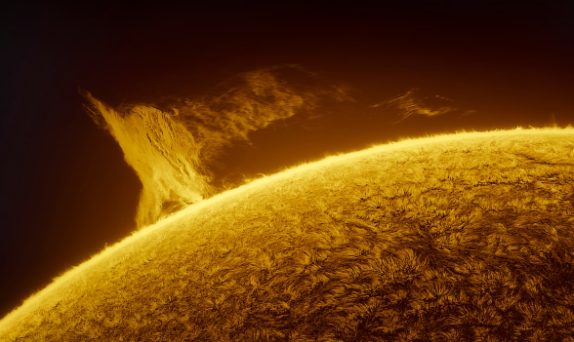
A massive solar prominence — a feature made of plasma, a hot gas that contains electrically charged helium and hydrogen — hangs above our sun. The image was highly commended in the category, Our Sun.
Miguel Claro captured this image from the Dark Sky Alqueva region in Portugal on Feb. 7, 2022. The prominence was visible for two days, and later threw a coronal mass ejection (CME) into space. If Earth is in the path of a CME, we can get great displays of auroras, or northern (and southern) lights.
Miguel used a telescope with a special solar filter and captured the prominence on video.
The International Space Station Transiting Tranquility Base
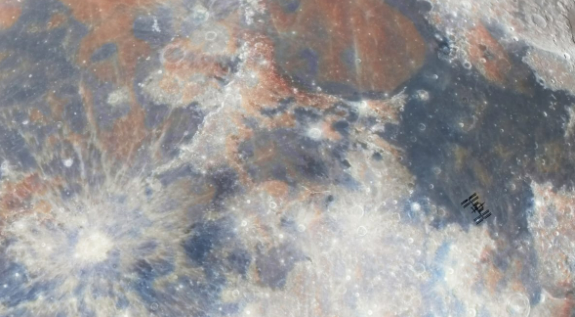
The International Space Station (ISS) is seen directly over the Apollo 11 landing site on the moon, in the Sea of Tranquility.
Andrew McCarthy, the winner in the People and Space category, was able to get the shot from Florence, Ariz. The entire transit of the ISS across the moon lasted only a few milliseconds and required a lot of planning to get the shot just right.
The image itself was just a 0.3 millisecond exposure.
The Eye of God

The winner in the Stars and Nebula category is Weitang Liang who photographed the Helix Nebula from the Río Hurtado, Coquimbo Region of Chile on Aug. 8, 2021.
This nebula — often called the Eye of God — is a planetary nebula, which surprisingly has nothing to do with planets. It is a cloud of gas and dust that has been shed by a parent star as it nears the end of its life. It is believed that one day, our sun will also create a beautiful nebula such as this.
Liang collected 22.5 hours of data to produce this final image.
Badwater Milky Way
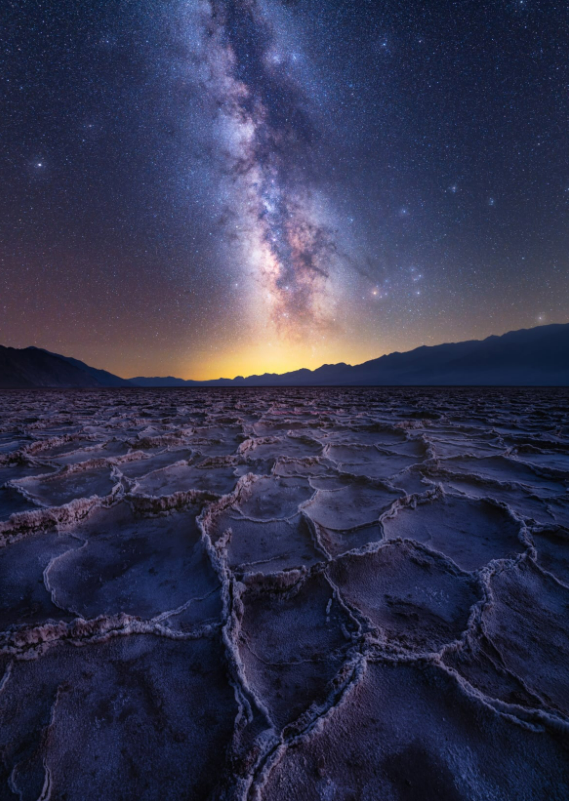
Abhijit Patil is the runner up in the Skyscapes category. He photographed the Milky Way stretched over the salt flats at Badwater Basin in Death Valley National Park in California.
Each winter new rainwater is brought to the flats, where a continuous freeze-thaw-evaporation process creates the hexagonal patterns seen in this photograph.
The image is a composite of a five-second exposure of the ground and a five-minute exposure of the sky.
Andromeda Galaxy, The Neighbour
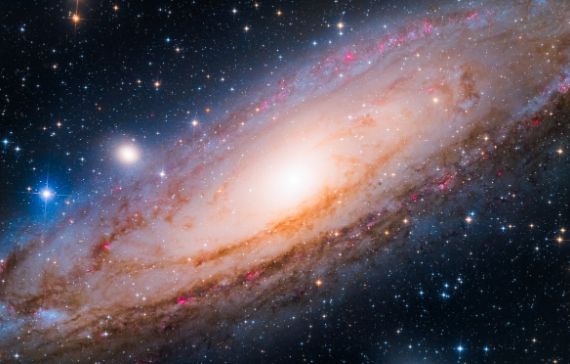
Finally, the Young Astronomy Photographer of the Year award was won by Yang Hanwen and Zhou Zezhen, two 14-year-old boys from China. The pair collaborated to take an image of our nearest neighbour, the Andromeda Galaxy on Feb. 21, 2021.
The galaxy is one of our closest and largest neighbours and is on a collision course with the Milky Way. But there’s no need to panic: it’s not expected to happen for another five billion years. It took a total exposure of 17 hours to capture this image.
For a full list of winners, visit the Royal Museum Greenwich website. The photographs will also be on display at the National Maritime Museum in London beginning Sept. 17.
Related stories from around the North:
Canada: Project laying groundwork to better track future climate impacts on seaweed in Arctic, Eye on the Arctic
Greenland: Climate change accelerating ice loss from peripheral glaciers, Eye on the Arctic
Norway: Will the green transition be the new economic motor in the Arctic?, Eye on the Arctic
Sweden: Sweden’s climate policies closer to reaching goals, Radio Sweden
United States: Bering Sea ice at lowest extent in at least 5,500 years, study says, Alaska Public Media

